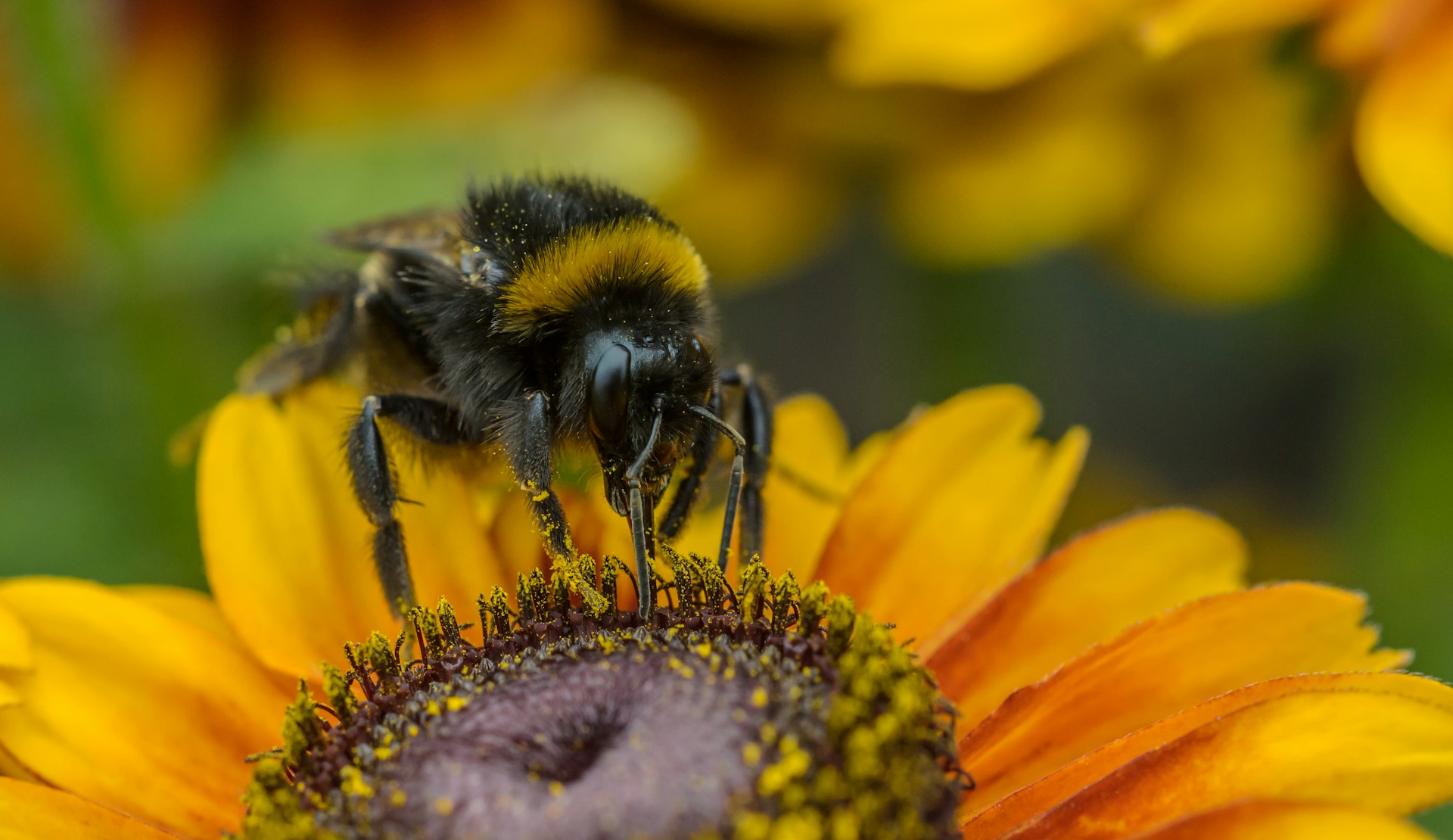Our News
Climate Change & Bees

Photo by Dominik Scythe on Unsplash
Carbon Literacy is: ‘An awareness of the carbon costs and impacts of everyday activities and the ability and motivation to reduce emissions, on an individual, community and organisational basis.’ Using your Carbon Literacy to make meaningful carbon reduction actions is integral to lessening the impacts of climate change. This is important because every activity and item has a carbon impact, and climate change affects just about everything!
This is why we are launching a ‘Climate Change &’ blog series about the interconnectedness of climate change – with other environmental and social issues – to show how our work (and therefore yours) makes a difference far beyond emissions reduction.
As a nod to the cultural symbol of our Mancunian roots, and to celebrate the beautiful blooms of spring this Earth Day, what better topic to start this series off than the brilliant role of bees.
The importance of pollination
Before we can even begin to speak about bees, we need to talk about pollination. To flowering plants, this is a process just as important as photosynthesis. They must be fertilised with pollen in order to reproduce. Some plants do this themselves (self-pollination) but most rely on insects to carry pollen from one to another. This is called cross-pollination, on which 35% of our food supply depends!
What makes bees so special
If pollinating was an Olympic sport, bees would win gold every time. Bees to visit flowers to drink nectar for survival and to collect pollen for their nests. This results in more plants being visited by bees than any other pollinators.
Additionally, the 20,000 different species of bee worldwide, all differing in size, shape and emergence time, accommodate for the pollination of a larger variety of flowers.
Between US$235 and $577 billion worth of annual global food production relies on pollinators. But even the UK’s 270 species of bee alone are worth a staggering £690 million to the UK economy.
Bees under threat!
So, bees are vital. Yet, in our modern, industrialised world, they are facing a range of complex and interacting threats – the cumulative effect of which could affect the abundance and diversity of bee species.
Their numbers are falling…
- Pollinator populations are estimated to have been diminishing since the 1970s.
- 35 UK bee species are under threat of extinction.
- 17 have been found to be locally extinct in the East of England.
Main drivers of decline…
- Habitat loss: caused by land-use change and intensive farming, resulting in decreased meadowland and other bee habitats.
- Pesticides: impacting reproduction, navigation and disease resistance, these are particularly threatening to their survival.
- Climate change: read on to learn how climate change is directly and increasingly wreaking havoc among bee populations…
Connection to climate change
Perhaps surprisingly, bees feel the effects of climate change more greatly than those of habitat disturbance. Recent Penn State research found that the abundance and diversity of bee populations are heavily determined by weather conditions. During the study, higher temperatures and more intense rainfall during Winter and Spring months were associated with a lower abundance of wild bees.
What’s more, as seasons become less predictable, the phenology of bee emergence and flowering times becomes ‘mismatched’. Bees emerging and flowers blooming at different times can lead to insufficient pollination. This disruption in synchronicity ultimately decreases levels of seed production.
It is undeniable that climate change poses a significant threat to the wild bee population, and hence our global food supply.
How we can make a difference
There are many things we can do to help preserve our bee populations. If you have a garden, access to green space, or even a windowsill, try out Friends of the Earth’s ten tips to help bees. If you don’t have that luxury, you can still make a difference by asking the UK government to protect our bee populations. There are various petitions you can sign to help protect bees from pesticides, for example, ‘Save bees from deadly pesticides’ and ‘Shape the future of our countryside’. Friends in Manchester who want to fight to protect the city’s mascot can attend a ‘Save the Bees’ protest happening just next week. Beyond this, we’ve seen how the effects of climate change are negatively impacting bee populations. Therefore, any action you take towards reducing your own and others’ emissions will mitigate the impact on bees too – the more steps we take, the larger impact we can have!
If you’d like to delve deeper into the fascinating world of bees, here are some links to fabulous resources: